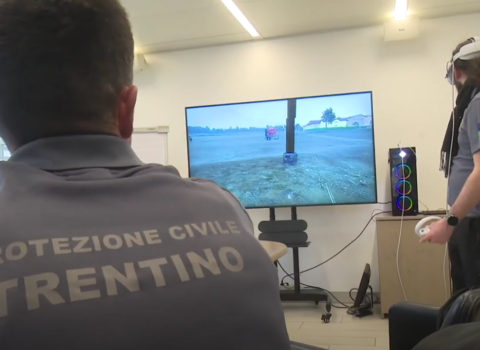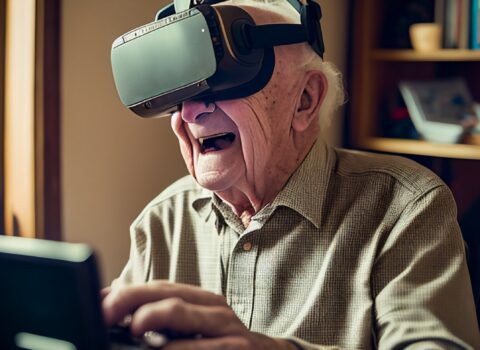#realtà virtuale
-
 February 13, 2025Civil defense, operator training with virtual reality viewersAlbere and Vela neighborhoods hit by flooding: emergency management simulation teamed up with Austria and Portugal
February 13, 2025Civil defense, operator training with virtual reality viewersAlbere and Vela neighborhoods hit by flooding: emergency management simulation teamed up with Austria and Portugal -
 March 29, 2024April 2 – World Autism Awareness DayOngoing research projects at Fondazione Bruno Kessler
March 29, 2024April 2 – World Autism Awareness DayOngoing research projects at Fondazione Bruno Kessler -
 January 30, 2024Virtual reality: the FBK-TS4.0 study published in the scientific journal “NATURE”"Use of personalized virtual environments in people with cognitive impairment": this is the title of the study published in the prestigious international high-impact journal Scientific Reports - Nature (Sci Rep - ed. Springer Nature) and conducted by FBK researcher Susanna Pardini, as part of TrentinoSalute4.0 activities.
January 30, 2024Virtual reality: the FBK-TS4.0 study published in the scientific journal “NATURE”"Use of personalized virtual environments in people with cognitive impairment": this is the title of the study published in the prestigious international high-impact journal Scientific Reports - Nature (Sci Rep - ed. Springer Nature) and conducted by FBK researcher Susanna Pardini, as part of TrentinoSalute4.0 activities. -
June 22, 2020SECURITY LANDSCAPE: a 3D exhibition within “BESec” Jean Monnet projectThe visual investigation that TerraProject has carried out concerns the relationship between threats to security in contemporary European society and changes in the urban landscape. What does the landscape we have built express? What message will we leave to future generations through it?